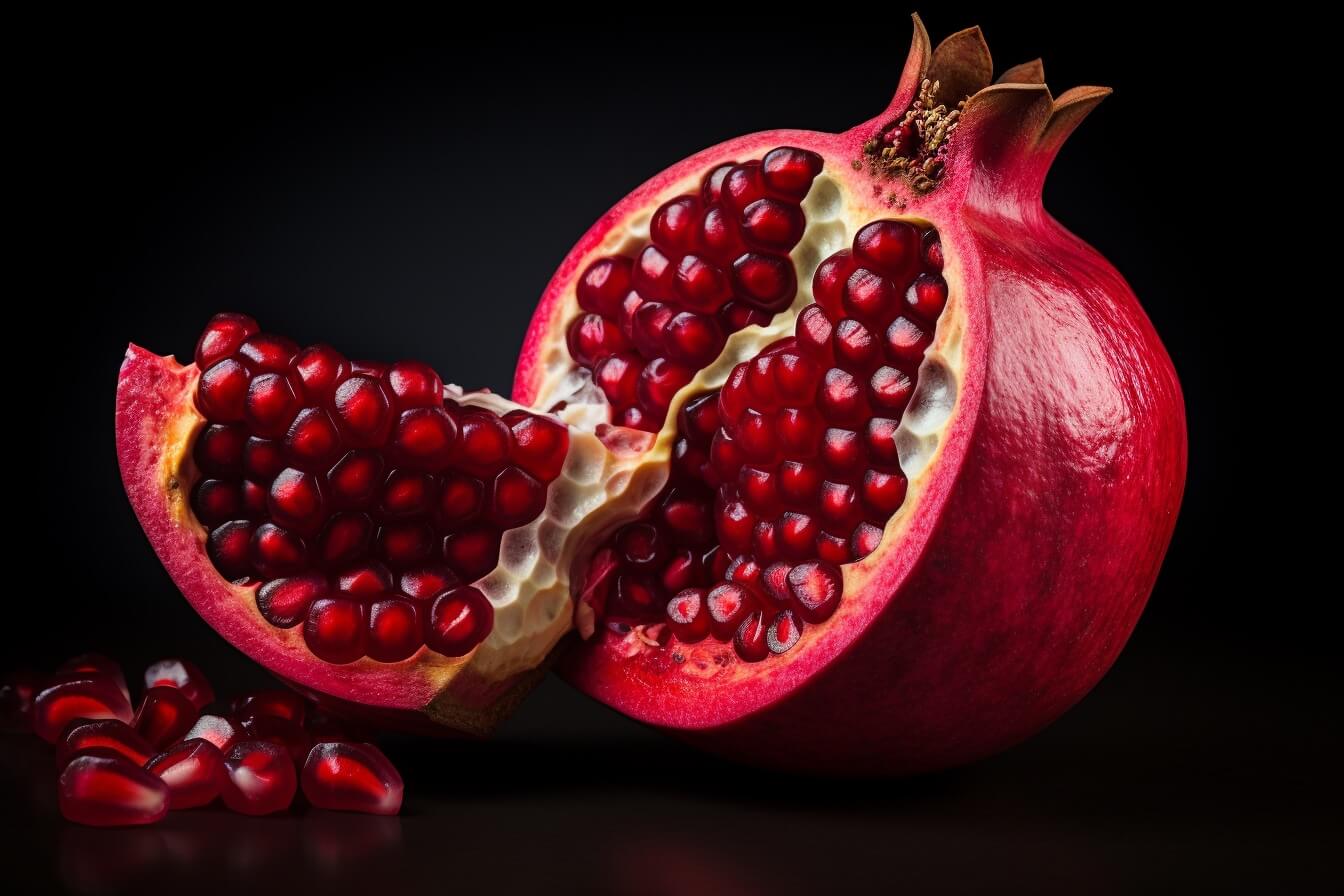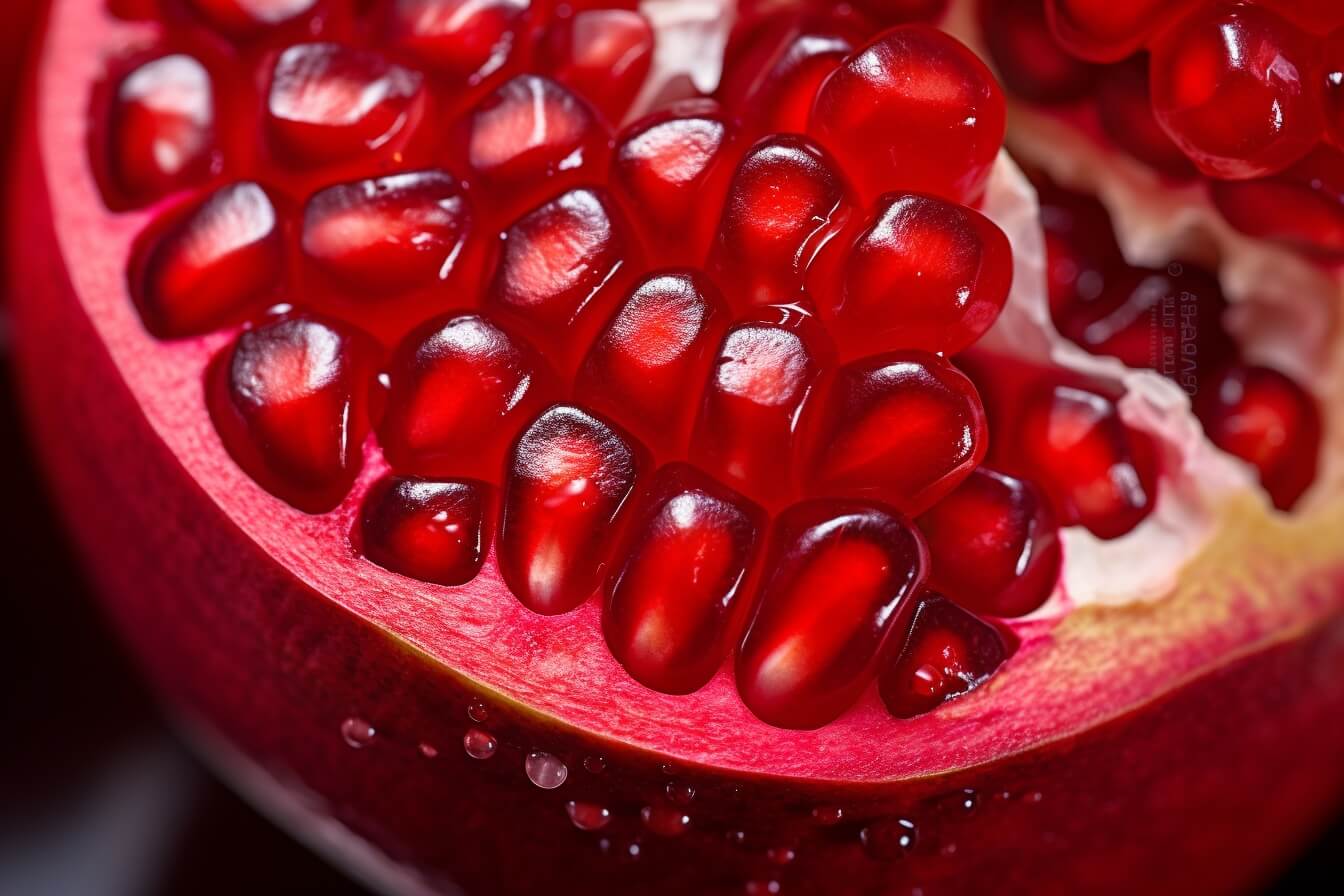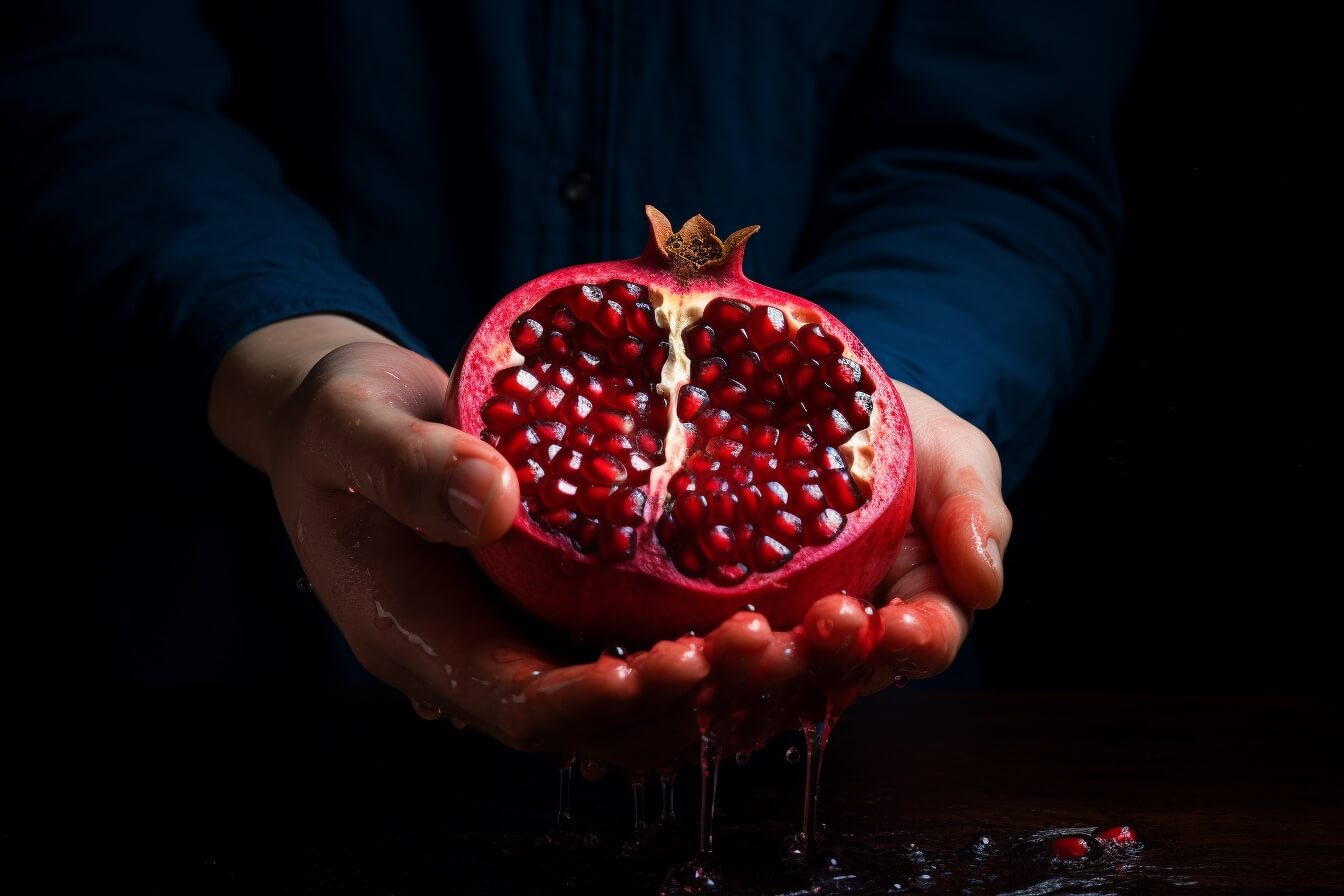First and foremost, it’s crucial to understand that pomegranates differ from other fruits. Their hard, thick skin makes it challenging to ascertain their ripeness. Nonetheless, several clear signs exist that can aid you in identifying a ripe pomegranate.
Here are some tips to help you enjoy this unique fruit:
- Look for deep red color;
- Choose fresh pomegranates that are heavy for their size;
- Give the fruit a gentle tap – it should sound hollow;
- Smell the fruit – it should smell sweet and fresh;
- Avoid pomegranates that have bruises, cuts, or soft spots.
In this article, I’ll be sharing these indicators with you, as well as some other helpful information about pomegranates, such as their health benefits and how to harvest and store them.
Let’s get started!

Identifying a Ripe Pomegranate: 5 Key Indicators
When it comes to identifying a ripe pomegranate, there are five key indicators to look out for. First, I always perform the texture test, feeling for a leathery skin that indicates ripeness.
Next, I pay attention to the color cues, looking for a shift from green to a deep crimson. Weight is also important, as a heavier pomegranate is typically a sign of ripeness.
Lastly, I check the shape and listen for a hollow sound when tapped, which can indicate a ripe fruit.
To help you determine if a pomegranate is ripe, refer to the table below:
| Ripeness Indicator | Ripe | Unripe |
|---|---|---|
| Color | Dark red or bright red | Pale or green |
| Texture | Leathery skin | Soft or hard skin |
| Weight | Heavy for its size | Light for its size |
| Sound | Hollow sound when tapped | Dull sound when tapped |
| Taste | Sweet and tart | Bland or sour taste |
1. The Texture Test: Understanding the Leathery Feel
To understand if a pomegranate is ripe, you need to feel its leathery texture, which is one of the most important indicators of ripeness. When you touch a ripe pomegranate, you’ll feel a firm yet pliable skin, similar to a ripe banana.
If the fruit is too hard, it may be unripe, while if it’s too soft, it may be overripe.
2. Color Cues: From Green to Crimson
The color is one of the most reliable indicators of pomegranate ripeness, and it’s easy to spot the difference between an unripe pomegranate with a bright red skin, and a fruit ripe to perfection with a dark red, almost maroon skin.
When selecting a pomegranate, avoid those that are pale or have a greenish tint, as these are signs of an unripe pomegranate.
3. Weight a Minute: The Heavier, the Better
A ripe pomegranate will feel heavier than an unripe or overripe one. When you hold it in your hand, it should feel substantial and full.
This is because the juicy seeds inside the pomegranate are plump and have filled out the fruit’s leathery skin. If the pomegranate feels light for its size, it may be underripe and lacking in flavor and juice.
The weight of a pomegranate is also related to its health benefits (Biomed Res Int., 2014). A heavier pomegranate means more nutrient-dense seeds packed inside, which can enhance the fruit’s potential to improve heart health, blood flow, and reduce inflammation (Vasc Health Risk Manag., 2021).
4. Sound Advice: Hollow or Dense?
Listen closely to the sound of a pomegranate when you tap it – a ripe one will have a satisfyingly dense thud, while an unripe one will sound hollow and empty. This is a reliable indicator of ripeness, as the arils (the juicy, edible part of the fruit) inside a ripe pomegranate are plump and full of juice, creating a denser sound when tapped.
On the other hand, an unripe pomegranate will have underdeveloped arils that are not yet full of juice, resulting in a hollow sound. It’s important to note that overripe pomegranates can also sound hollow, so it’s best to use a combination of ripeness indicators when selecting a pomegranate to ensure it’s at its peak.
5. The Ultimate Test: Taste
To open a pomegranate, start by cutting off the crown and then scoring the skin along the ridges.
Place the pomegranate in a bowl of water and gently pull the sections apart, allowing the arils to separate from the white pith. This method helps prevent staining and makes it easier to extract the juicy seeds.
A ripe pomegranate will have deep red arils that are sweet and tart. In contrast, a rotten pomegranate will have a foul odor and a splitting skin.

The Pomegranate Harvest Season
In North America, the harvest season typically runs from mid-September to late December or early January, but there may be regional differences in harvesting time, according to USDA.
Pomegranate trees typically begin to bear fruit in the late summer or early fall, with the growing season lasting until the first frost.
Here are some regional differences to keep in mind:
- In warmer regions, pomegranates may start to change color and become ripe as early as mid-September.
- In colder regions, it may take a couple weeks longer for the fruit to ripen fully.
- Pomegranate growers in all regions need to be careful of bird pecking, which can damage the fruit and make it difficult to harvest.
When looking to pick a pomegranate, it’s important to keep in mind that using pruning shears is the best method for harvesting. This ensures that the fruit is not damaged and remains intact.
Handling and Storing Pomegranates Post-Harvest
To ensure your pomegranates remain fresh, it’s crucial to store them in a cool, dry place or in the fridge. Pomegranates can last for a couple of weeks if stored properly.
When handling pomegranates, it’s essential to be gentle. The fruit is delicate and can easily bruise, causing it to spoil faster. Do not try to ripen pomegranates off the tree as they do not continue to ripen once harvested.

